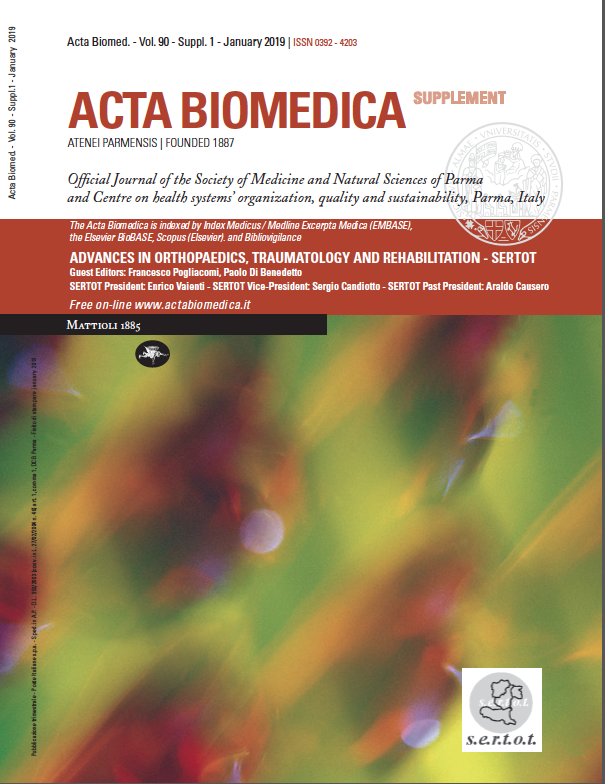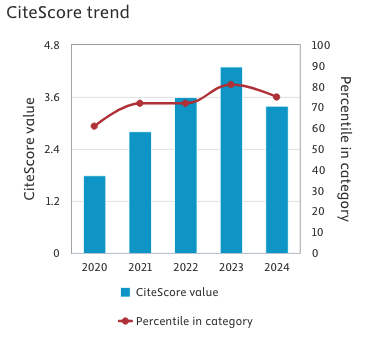Two-stage management of a spontaneous fracture of the greater trochanter through osteolytic lesions induced by polyethylene wear of a total hip arthroplasty. A case report
Keywords:
total hip arthroplasty, trochanteric fracture, osteolytic lesion, periprosthetic fracture, pathological fracture, polyethylene wearAbstract
Pelvic osteolysis induced by particulate debris derived from bearing surfaces is a well-known complication following total hip arthroplasty (THA). Atraumatic fractures of the greater trochanter (GT) associated with osteolytic lesions have been occasionally described. We present a case of a 71-year-old male patient who sustained an undisplaced fracture of the GT nine years following cementless metal-on-polyethylene THA. The fracture occurred through a 2.5-cm large osteolytic area, and no hip trauma was recorded. Conventional radiographs revealed peculiar signs of massive wear of the polyethylene acetabular liner (marked eccentricity of the prosthetic head and extensive osteolysis around the iliac screws), allowing to immediately conclude about the benign nature of the pathological fracture. To our knowledge, a two-stage management, planning conservative healing of the fracture and subsequent surgical replacement of the worn acetabular liner, has never been previously detailed.
Downloads
Published
Issue
Section
License
This is an Open Access article distributed under the terms of the Creative Commons Attribution License (https://creativecommons.org/licenses/by-nc/4.0) which permits unrestricted use, distribution, and reproduction in any medium, provided the original work is properly cited.
Transfer of Copyright and Permission to Reproduce Parts of Published Papers.
Authors retain the copyright for their published work. No formal permission will be required to reproduce parts (tables or illustrations) of published papers, provided the source is quoted appropriately and reproduction has no commercial intent. Reproductions with commercial intent will require written permission and payment of royalties.







